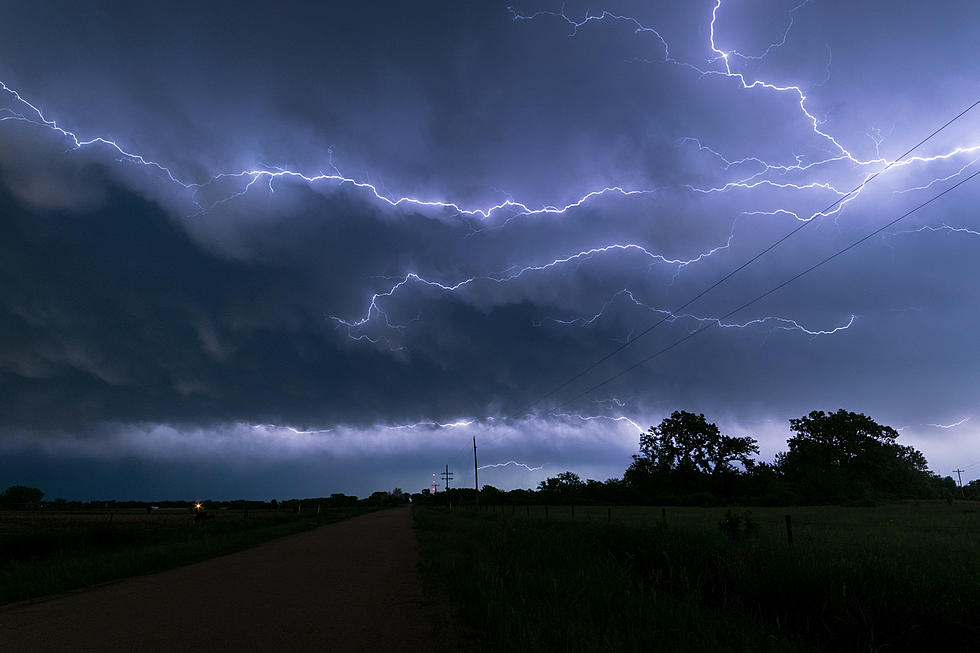
Remember The Really Bad Derecho That Hit South Jersey?
Regions of South Jersey and South Eastern Pennsylvania experienced a series of storms this past week that caused some serious flooding. While it wasn't a full-blown hurricane, the storm that swept through southwestern Florida certainly did take a bit of a toll on the areas here in South Jersey that always see the water levels overflow due to bad weather.
We also get storms here in the Garden State sometimes that are almost like mini-hurricanes with tornados that wind up forming. This type of storm hit us back in June of 2020. You've probably already forgotten that one's name. It's called a "derecho".
The name is so unrecognizable that spellcheck doesn't even register that "derecho" is a real word. So, what exactly is a derecho?

The National Oceanic and Atmospheric Administration identifies a derecho as a windstorm combined with thunderstorms and heavy rain that causes damage in a straight line. Basically, contrary to that of a tornado or hurricane, the damage left behind by a derecho can normally be traced by a straight line leaving experts to conclude that the specific wind pattern of this type of storm is, in fact, a straight path.
That's what South Jersey experienced back during the first few months of the pandemic. The storms were moving so fast and, if you paid attention to the radar, it looked like it basically traveled in a straight line down the both pikes and the AC Expressway.
The NOAA says that "falling debris" and "cloud-to-ground lightening" are what you most need to worry about if you're caught outside during a derecho:
"Falling debris is the most serious hazard posed by a derecho to those without shelter; cloud-to-ground lightning strikes are an additional hazard. Lie flat and face-down on low ground, protecting the back of your head with your arms. If possible, avoid trees; even relatively small branches can become lethal when blown by storm winds."
They also offer an explanation as to why so many South Jersey residents lost power during that storm two years ago and why it took so long for it to be restored:
"...It is the vulnerability of overhead electric and communication lines to high winds and falling trees that makes derecho winds especially problematic in urban areas. In addition to posing a direct hazard to anyone caught below the falling lines, derecho damage to overhead electrical facilities sometimes results in massive, long-lasting power outages that can affect hundreds of thousands of people; in the worst events, power may not be restored for days. The complex and dense networks of overhead distribution lines --- and their proximity to large trees --- make urban and suburban areas especially vulnerable to significant derecho-induced electrical and communication outages. In addition, unlike the localized damage produced by a tornado, derecho damage may be widespread, with repairs requiring considerably more time and effort to accomplish." - NOAA
The best way to be prepared for that type of fast-moving storm is to, quite plainly, pay attention to warnings and weather reports.
Luckily, the remnants of Hurricane Ian that hit this region weren't too bad. At least it was nothing like Superstorm Sandy or like the one that swept through the western part of South Jersey last year that really left developments wrecked.
Source: SPC.NOAA.GOV
LOOK: The most expensive weather and climate disasters in recent decades
LOOK: What are the odds that these 50 totally random events will happen to you?
KEEP READING: Get answers to 51 of the most frequently asked weather questions...
More From Cat Country 107.3


![Watch as Massive Wave Crashes Over North Wildwood NJ Sea Wall [VIDEO]](http://townsquare.media/site/398/files/2022/10/attachment-Wildwood-Wave.jpg?w=980&q=75)

![Ocean City Church Steeple Topples During Tropical Storm Isaias [VIDEO]](http://townsquare.media/site/398/files/2020/08/Chapel.jpg?w=980&q=75)




